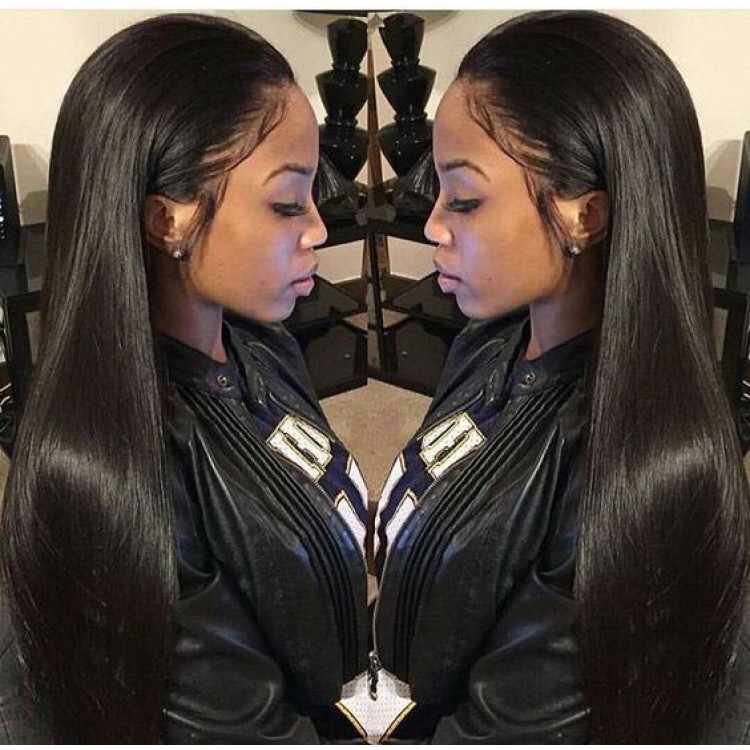Virgin Brazilian Hair vs. Peruvian Hair – Which is Better for You
 Todd
ToddWhen it comes to premium human hair extensions, two of the most popular choices among women are Virgin Brazilian Hair and Peruvian Hair. Both offer exceptional quality, natural beauty, and versatility, but they differ in texture, density, and overall styling capabilities. If you are considering investing in hair bundles or wigs, understanding the differences between these two luxury options will help you choose the one that best suits your lifestyle, styling preferences, and personal beauty goals.
Virgin Brazilian Hair: The Timeless Classic
Virgin Brazilian Hair is widely considered the most popular hair type in the beauty market. Known for its full body, smooth texture, and long-lasting durability, Brazilian hair is perfect for women who want a glamorous yet natural look. The hair cuticles are aligned in the same direction, ensuring minimal tangling and shedding.
One of the standout features of Brazilian hair is its versatility. It blends seamlessly with most hair types, especially natural African-American textures, and comes in multiple patterns such as straight, body wave, deep wave, and curly. Brazilian hair also holds curls exceptionally well while maintaining a soft and silky finish.
Another reason many women prefer Virgin Brazilian Hair is its density. It’s thicker and fuller compared to many other types of virgin hair, meaning you’ll need fewer bundles for a complete install. This makes Brazilian hair not only beautiful but also cost-effective in the long run.
Peruvian Hair: Lightweight and Luxurious
Peruvian Hair has gained popularity because of its lightweight texture combined with incredible volume. Women who want a fuller look without the heavy feel of thicker hair often choose Peruvian extensions. Despite being lighter, Peruvian hair still offers excellent body and density, making it a fantastic choice for those who want effortless styling.

What sets Peruvian hair apart is its soft and silky texture. It feels more lightweight than Brazilian hair, which makes it very comfortable to wear, especially in hot or humid climates. This hair type also blends beautifully with both relaxed and natural hair, giving a flawless, natural finish.
Peruvian Hair is also known for its ability to achieve a luxurious, bouncy style with minimal effort. Whether you want a sleek straight look or voluminous curls, Peruvian hair delivers with grace and ease.
Brazilian vs. Peruvian: The Key Differences
While both Brazilian and Peruvian hair are of premium quality, the right choice depends on your styling goals:
Texture & Thickness: Brazilian hair is thicker and denser, while Peruvian hair is softer and lighter.
Volume & Comfort: Peruvian hair provides volume without weight, whereas Brazilian offers a fuller, denser look.
Styling Versatility: Both hold styles well, but Brazilian hair is slightly more resilient to heat and chemical styling.
Climate Adaptability: Peruvian hair’s lightweight nature makes it ideal for warmer climates, while Brazilian hair works well for everyday wear in various conditions.
Which One Is Better for You?
If you love full-bodied, glamorous hairstyles with lasting curls and durability, Virgin Brazilian Hair may be your best match. On the other hand, if you prefer lightweight extensions that offer volume without heaviness, Peruvian Hair is an excellent choice.
Ultimately, the decision comes down to your personal style preferences, comfort, and lifestyle needs. Both types provide premium quality, longevity, and a natural finish, making them excellent investments for anyone seeking luxurious hair extensions.
Choosing between Virgin Brazilian Hair and Peruvian Hair is less about which one is “better” and more about which one suits you. Brazilian hair offers thickness, durability, and glamor, while Peruvian hair delivers softness, comfort, and effortless styling. No matter which you choose, both will transform your look, enhance your confidence, and provide the flawless beauty you deserve.
Subscribe to my newsletter
Read articles from Todd directly inside your inbox. Subscribe to the newsletter, and don't miss out.
Written by
